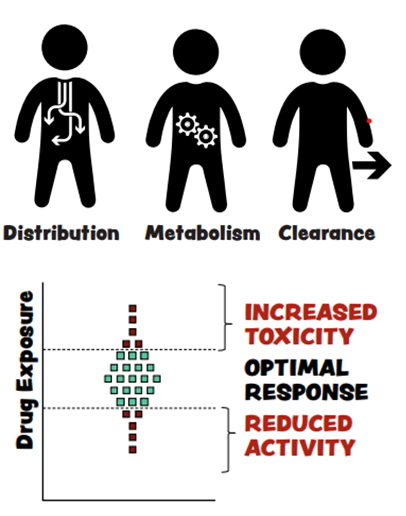GOSH YPAG and a Summer of Science
- ChromaDose

- Jul 19, 2023
- 4 min read
By Oceiah and Parveen
GOSH YPAG have been collaborating with the ChromaDose team since March 2021 and several Blogs have already been written with our updates.
The ChromaDose team are conducting research into developing a blood testing device to personalise the amount of medicine (anthracyclines) children with cancer receive. This is due to the differences in exposure (the way we process medication differently) in our bodies.
Patient and Public Engagement is important to the team as they want to reach out and offer a range of fun science-related hands-on activities to explain all about their research, the science behind the project and educate people about personalised medicine.
So, GOSH YPAG were delighted to hear that ChromaDose was one of nine flagship exhibits (specially selected) to be one of the main features of this year’s Royal Society Summer Science Exhibition from the 4 - 9 July. It was really exciting for members of GOSH YPAG to join the team as science exhibitors which also offered them the opportunity to work on their engagement skills and to highlight the important role they play as young people involved in research.
Read on to hear from Oceiah and Parveen on how GOSH YPAG supported ChromaDose during the lively and busy week.
What have brussels sprouts got to do with personalised medicine and exposure? – let’s break it down…
Phenylthiocarbamide (PTC) is a common marker to test the ability for tasting bitterness.
Depending on differences in your genes, some people can taste the bitterness of PTC and similar chemicals present in brussels sprouts, while others cannot.
This is related to the PTC gene, which determines the shape of the receptor responsible for tasting bitterness. The better the match, the stronger the sensation of bitterness.
On average, 25% of people cannot taste PTC at all and another 25% who are the supertasters as they can taste the bitterness, 50% will taste a milder taste.
Visitors to the stall were met by our ‘wonderful’ veg… Mr. Brussel Sprout and invited to take a Brussels Sprouts test strip.

(image below shows the results from the whole exhibition).
“I am apparently a supertaster for PTC (which as amazing as it may sound, left an incredibly bitter taste in my mouth)!” (Parveen)
“I had no taste when I took the test!” (Oceiah)
The activity was used to highlight how ChromaDose works as just as genetic differences influence our perception of bitterness, the processing of drugs by our body also varies. Depending on our genes and a range of other factors, we all distribute, break down and clear drugs from our bodies at different rates. This means that following a standard dose of a drug used for cancer treatment, some patients will have higher or lower drug exposures.
For cancer treatment, some patients will have higher or lower drug exposures. ChromaDose, will therefore, use an optimal amount of medicine to measure the drug concentration in our body at various time points after the drug has been given. The dose can then be modified and personalised accordingly. This is very important for anticancer drugs, where a therapeutic effect is hard to achieve, and strong side effects can be expected.
Primary school children were very excited to play the ChromaDose game where they had to decide on the dosage of drug the characters in the game needed.
The ChromArt stall
“Throughout my day I was helping to lead activities on the ChromArt stall. This was an arts and crafts table inspired by the chromatographic separation technique used within blood testing devices. To represent the process that occurs within the device, visitors had the choice of making a flower, butterfly or keyring using chromatography paper and felt tip pens. They could use colours of their own choice to decorate the filter paper (stationary phase) and place it in a shallow bowl of water (mobile phase). I was involved in helping to explain and answer questions about the stall and gave visitors tips on how to make the different filter paper objects. The stall was really busy at times and proved to be really popular with people of all ages!” (Parveen)
These art activities showed how some substances move slower, while others move faster. In ChromaDose, the team use this method to separate a drug from other substances in the blood to figure out exactly how much drug is in the sample. The team will take a photo of it and then analyse the colours and their separation. This is so that, they can make sure the individual(s) have the correct dosage for their body.
“On my day I found this activity very especially popular with young people as they were very inquisitive in exploring how chromatography works. They loved watching the colours move in the stationary and mobile phrases of chromatography, including taking their souvenirs home.” (Oceiah)
GOSH YPAG also chatted about the development of the project and how they have been involved over the years with co-creation and co-production. Lots of people were interested to hear each other’s perspective and what they think the future will look like for ChromaDose.
Some key facts to round up:
In total close to 10,000 people came to the exhibition.
We had GOSH YPAG participation on all 5 days that were open to the general public
32 volunteers worked at the ChromaDose representing our key partners Imperial College, Newcastle University, PORT, UCL (University College London) University of Birmingham Vesynta and YPAG GOSH.
Overall, we had such a great time with the ChromaDose team and Iearned a lot from the experience! That’s all everyone - Until YPAG are involved with the ChromaDose project again.








Comments